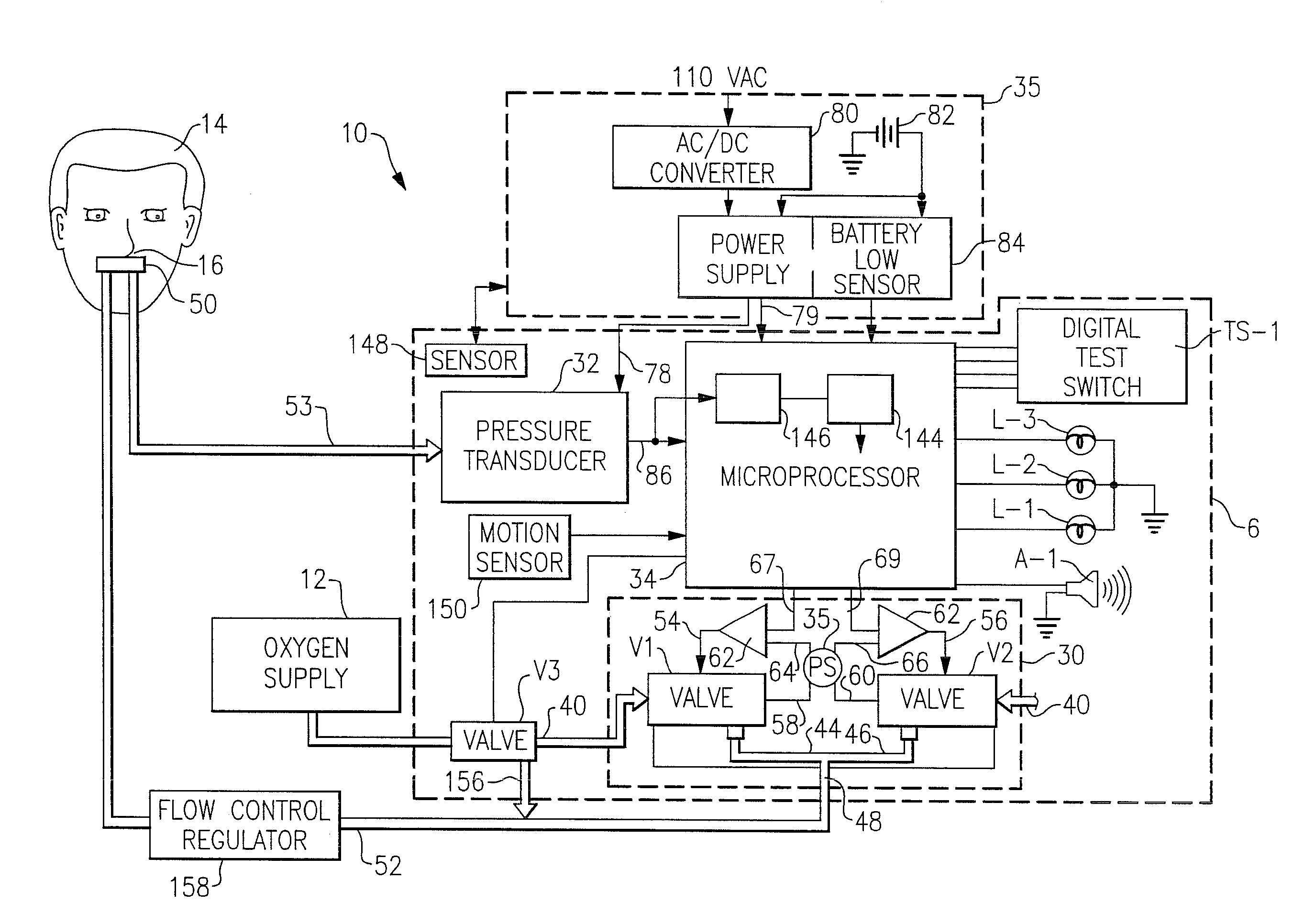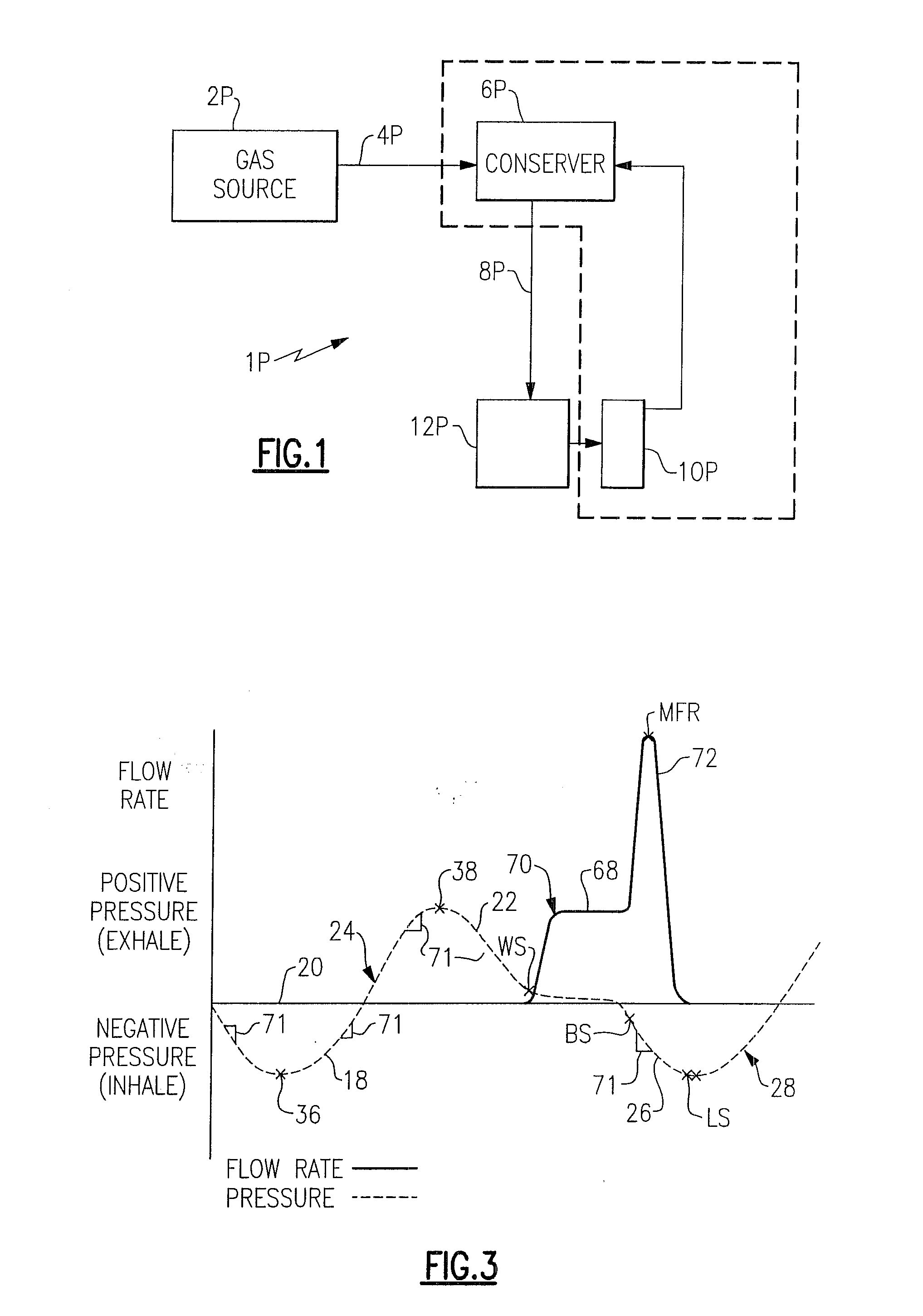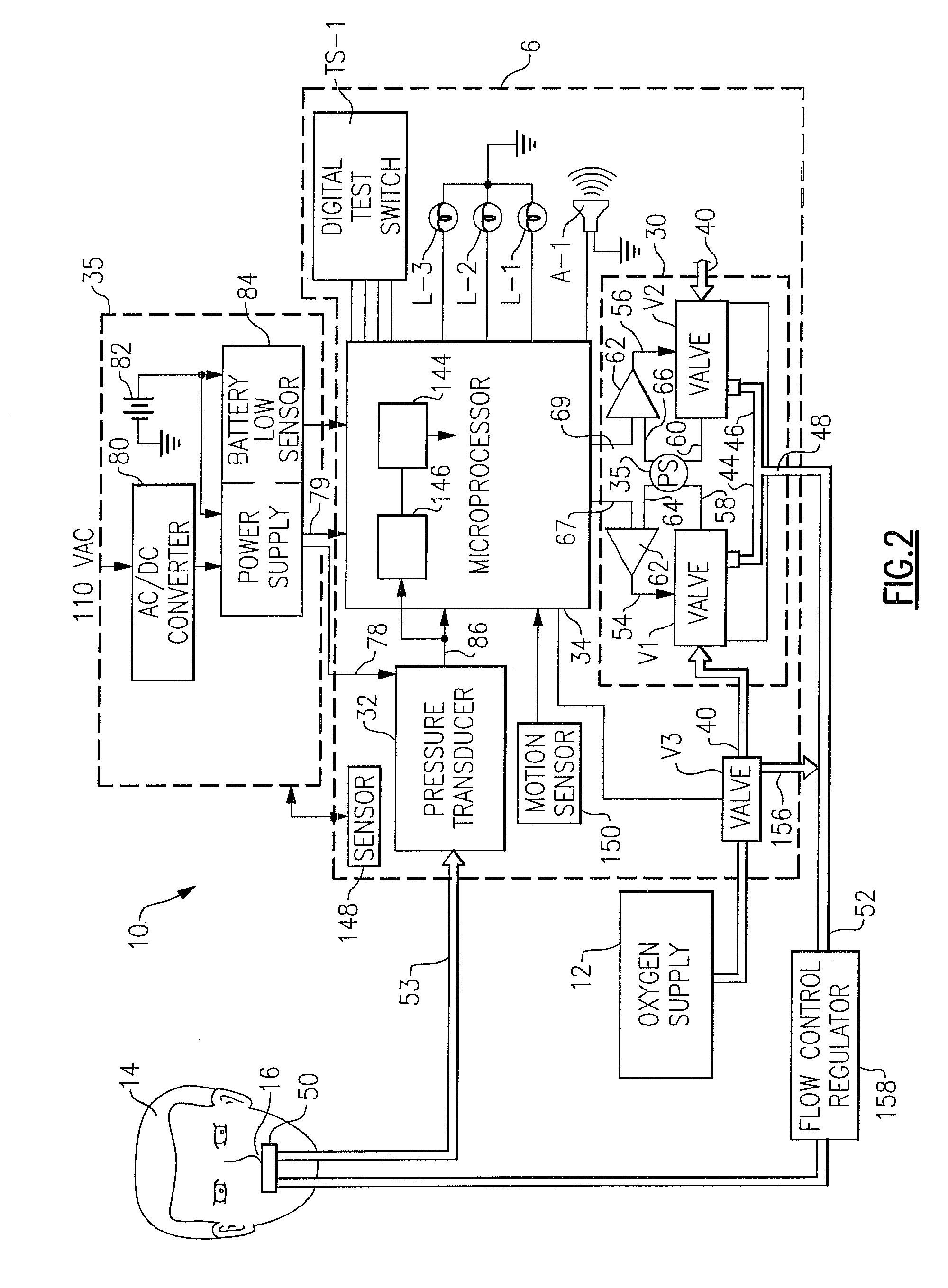System and method for conserving oxygen delivery while maintaining saturation
a gaseous treatment fluid and oxygen supply technology, applied in mechanical equipment, valves, operating means/releasing devices, etc., can solve the problems of time delay, more serious problems, and full complexity of the problems of the gas dispensing system of the prior, and achieve the effect of increasing oxygen concentration
- Summary
- Abstract
- Description
- Claims
- Application Information
AI Technical Summary
Benefits of technology
Problems solved by technology
Method used
Image
Examples
Embodiment Construction
[0038]The present invention is directed at maximizing conservation of the delivery of a treatment gas to a patient while, at the same time, maintaining the patient adequately saturated during, for example, a loss of respiratory data from the patient or a loss of power in the system. Systems for doing so are frequently referred to as “intermittent gas-insufflation” systems wherein the term “gas-insufflation” refers generally to the delivery of a treatment gas, such as oxygen or a carrier gas carrying suspended particles or droplets of medication of some other treatment fluid(s) or material(s), to a patient to be breathed in by the patient. The term “intermittent”, in turn, refers to such systems that do not deliver a continuous flow of treatment gas, but instead deliver the treatment gas only during those phases of the breathing cycle or during those demand periods when the delivery would be advantageous, thereby reducing the consumption of the treatment gas while providing adequate ...
PUM
 Login to View More
Login to View More Abstract
Description
Claims
Application Information
 Login to View More
Login to View More - R&D
- Intellectual Property
- Life Sciences
- Materials
- Tech Scout
- Unparalleled Data Quality
- Higher Quality Content
- 60% Fewer Hallucinations
Browse by: Latest US Patents, China's latest patents, Technical Efficacy Thesaurus, Application Domain, Technology Topic, Popular Technical Reports.
© 2025 PatSnap. All rights reserved.Legal|Privacy policy|Modern Slavery Act Transparency Statement|Sitemap|About US| Contact US: help@patsnap.com



